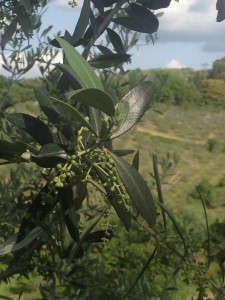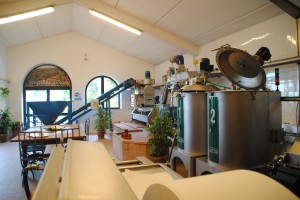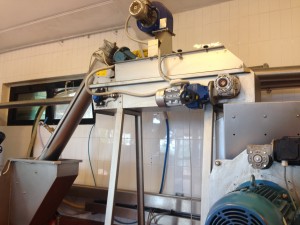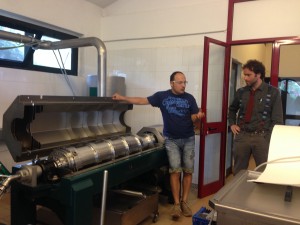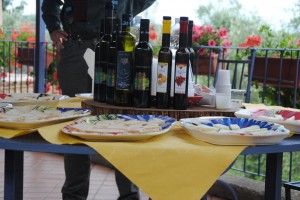Current Context
As an aspiring physician, I have particular interest in the dilemma Americans face of being able to buy affordable food products that are also healthful. One example of this includes top quality olive oil, which is praised for its medicinal benefits, yet costs upwards of $40 while a more mundane bottle in your local supermarket, made with lower quality ingredients, is only $10. Imagine you are an ordinary middle-class American having a couple of close friends over to make them dinner for the night. For your appetizer you were thinking of having some bruschetta, made with fresh tomatoes, basil, and olive oil. Which oil would you buy?
After getting the experience to go to Le Fonte di Foiano, an olive oil producer in the region of Livorno, Italy, I gained insight into answering this question. Before this experience, I was very disconnected from the food on my plate and did not think much about how it was produced. Often times, for example, I would choose to have stir fry from upper Kimball for my lunch or dinner, thinking that I was choosing a very healthy option, when now I realize the highly processed dressing or oil which the vegetables are cooked in may outweigh so many of the health benefits which they originally contained.
Case Study- Le Fonte di Foiano
During our visit to Le Fonte di Foiano, we were educated about how an olive goes from being picked off a tree, then cleaned in various ways, next dehydrated and sanitized, pressed in a special device, filtered, and finally put into bottles to be sealed and shipped to consumers. Going through the specifics of this process was an extremely transformative experience in how I view myself as a consumer. The way they used sophisticated technology while still respecting the innate features of the olive made me want to become more educated about how other foods I consume are connected to the larger story of agriculture.
In addition, we had the experience of tasting some of their olive oil after learning about its production. I had expected the oil to taste bitter on its own, but I was quite surprised in that I found it to have an overwhelmingly earthy and herbal flavor. I realized that this was because the oil from Le Fonte di Foiano is of a high quality, and they really respect the natural flavors of the olive without much alteration. I then became curious about whether or not the olive oil in my family’s pantry would taste similarly because I really have no idea how it is produced. I realized then that our challenge is to become more educated about what we are consuming in order to choose higher quality ingredients, which have more medicinal properties and could give us greater gastronomic pleasure.
Food as Medicine
Olive oil was used by the Ancient Greeks to prevent sports injuries and relieve muscle fatigue while other Mediterranean cultures used it as a lubricant to keep their skin elastic. In fact, along with wheat, vegetables, and wine, it is one of the four staples of the Mediterranean diet, and it has been demonstrated to stimulate digestion, protect against ulcers, and promote absorption of vitamin E. Additionally, top quality extra virgin olive oil has been demonstrated to contain healthy fats that lower your total cholesterol and decrease your risk of heart disease (Zannoner, 30-31).
Today, some people believe that food in fact can be used as a way of preventive medicine to stop the onset of a disease before it even starts. A person who is pre-diabetic, for example, is encouraged to consume more greens in place of saturated fats and sugars as a way of possibly reversing an imminent diagnosis. It is clear that diet has a definite effect on the way we feel and function, so to look further at this connection could enlighten humanity about how to achieve a more balanced diet and seek out more pleasure in their life.
Food and Pleasure
Once a person becomes committed to discovering more about a food’s individual story, they can then become aware of the quality of our products and also learn how the food fits into the larger picture of the world’s agricultural scene. For me, learning about how an olive is transformed from a plump fruit on a tree to the silky liquid found on a grocery store shelf was a very enlightening experience. My encounter, in fact, has heightened my pleasure in consuming the food by being aware of its history and tradition. Similarly, Enrico, a man who tends olive trees in Radda as a hobby, finds pleasure in tending the plants because he feels connected to the earth and to the history of the region through the taking care of the trees.
Often times researching food production leads consumers to seek out higher quality products that have not been modified or made with inferior ingredients. One of the major points of the 1970s Nouvelle Cuisine Revolution was to create lighter dishes by cooking top quality foods in a simple way that brings out their unique flavor. In this way, education about food products is directly connected with health because the most wholesome and unaltered foods reap the greatest health benefits. In contrast, people who do not take the time to research where the products they buy are coming from are often purchasing lower quality ingredients, such as olive oil obtained from the second press, which may not have comparable healthful qualities.
Conclusion
Although buying top quality products may be more expensive, my experience at Le Fonte di Foiano makes me believe it is worth the investment because of both their greater health benefits and the added gastronomic pleasure in consuming them, based off of knowing the foods’ origin. In addition, people may seek an economic benefit later on by preventing certain diseases and their associated health care costs. If people started to research the food they consume beginning from the label, similarly to how they inquire about a college or career, they may start to choose more healthful products and consequently, have a more pleasurable and happy life. Furthermore, although people often think that foods that “taste good” must be bad for you and vice versa, top-quality ingredients prepared simply can be both healthful and delicious.
The relationship of food and medicine is a complicated and long-considered phenomenon that has the potential to profoundly impact society. The field of medicine, for example, could be affected in that many diseases could be prevented with the right dietary choices; the field of economics, in that health insurance could become more economical for people who are healthier; and the field of politics, in that candidates running for office would have to be more conscious of the health impacts of their proposals. Overall, understanding how food gets from the pasture to the plate is essential in comprehending the connection of agriculture, food, and health. Once we realize this, we then become aware of the opportunity to choose higher quality ingredients, which are the result of a shorter production chain, have greater health benefits, and thereby can result in heightened pleasure when consuming them.
Works Cited
Zannoner, Cristina. (Ed.). (2001). Journey Through Tuscany: To Discover Typical Products. Firenze: Giunti. 30-31.

